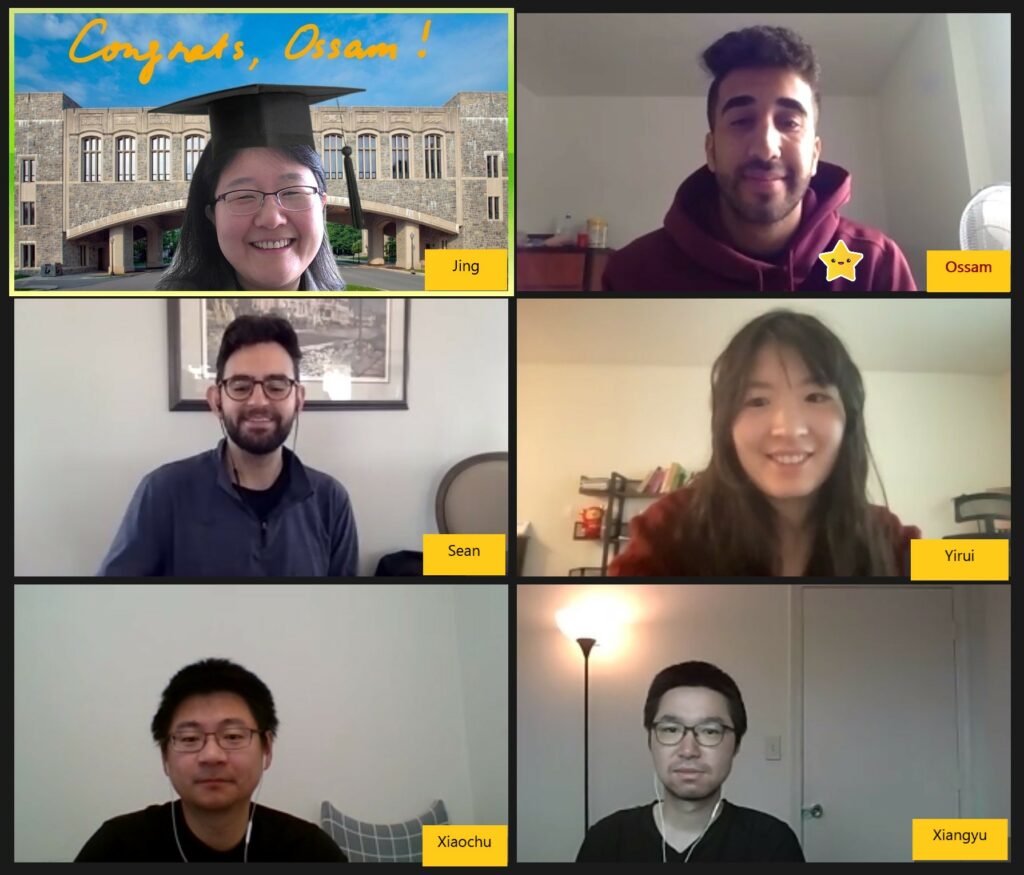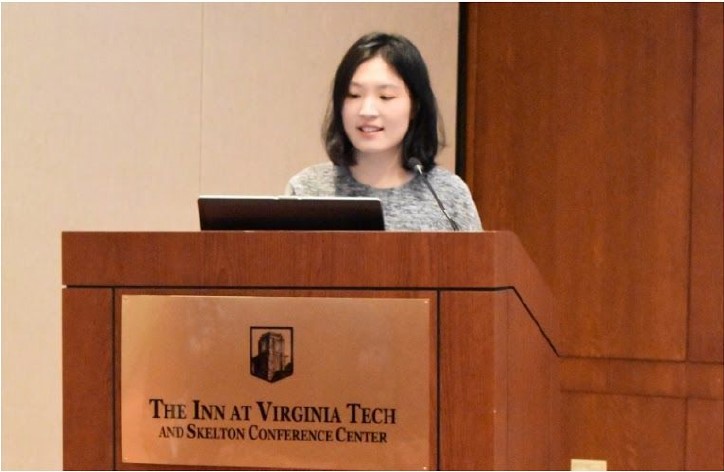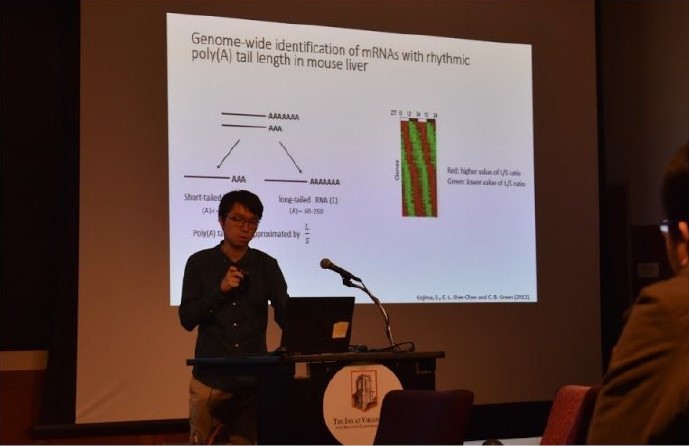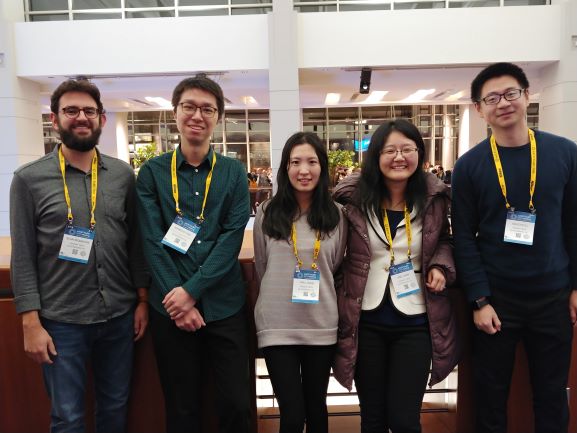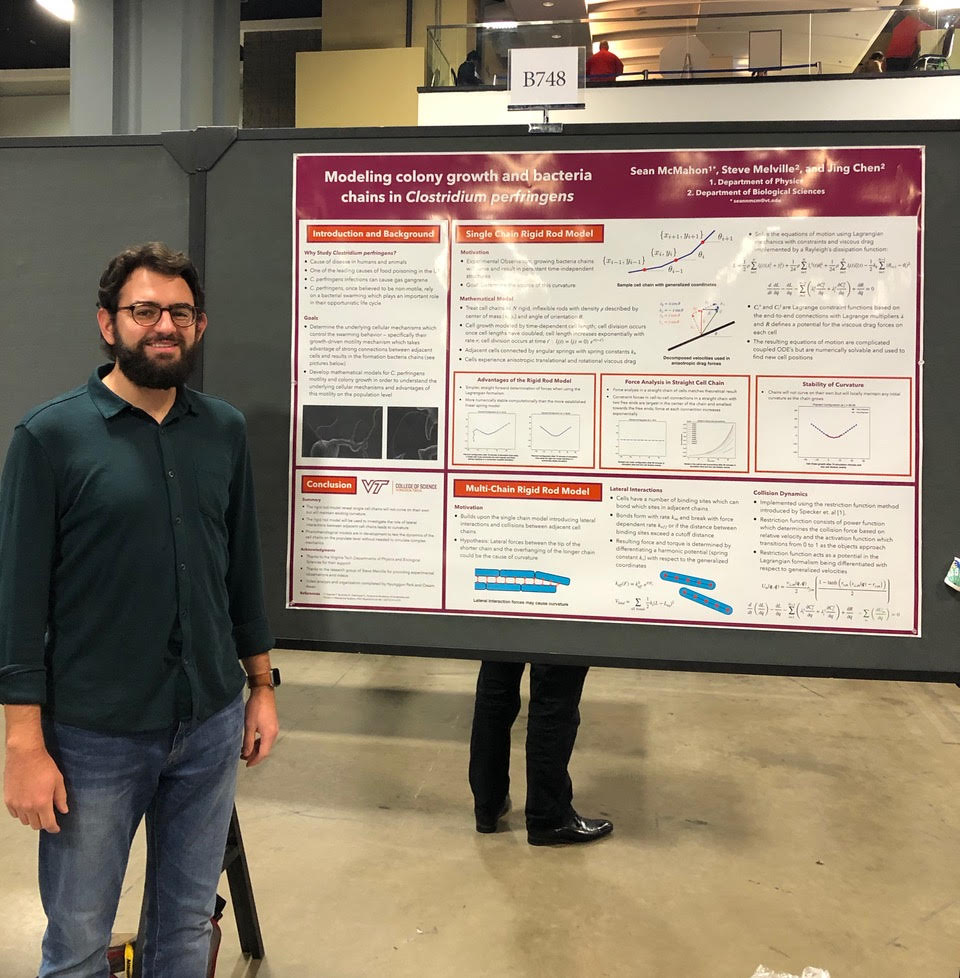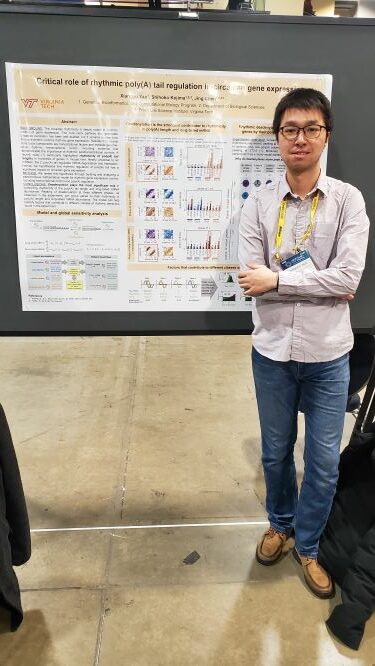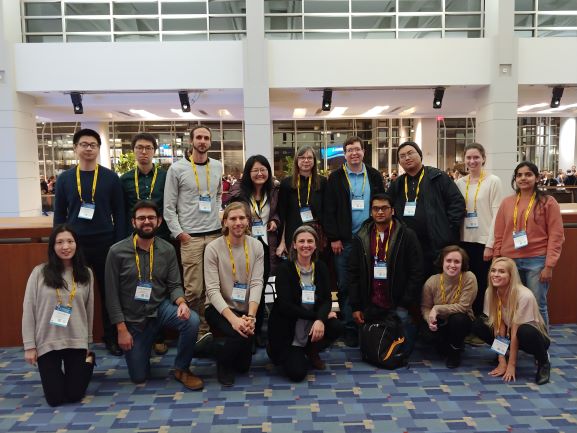Speaker: Sean McMahon, VT
Date and place: Wednesday, June 21, 4:00-5:00 pm
Title: Mechanical limitations of Clostridium perfringens chains
Abstract: Many bacteria species are able to expedite colony expansion through motility of the cells. Clostridium perfringens, the primary cause of lethal gas gangrene, exhibits a unique mode of colony expansion on a substrate surface that, surprisingly, does not depend on motility in single cells. Specifically, daughter cells maintain end-to-end connections after cell division, amounting to long chains of cells that continuously elongate as individual cells grow and divide. Such cell growth-driven motility would accelerate as cell divisions increase the number of cells in a chain, and the tip of a long chain could potentially reach a very high speed. However, in this work we constructed a mechanical model to show that the efficacy of such growth-driven motility is limited by the buildup of mechanical stresses at the cell-cell joints. Specifically, our model depicts the growth of the bacterial chains based on the cell growth, strength of connections between cells, and drag forces from the substrate. Our model shows that stress at the joints between adjacent cells increases exponentially as the cell chain grows, making long chains prone to breakage. We further performed a perturbation analysis to estimate the critical stress leading to chain breakage and its dependence on the mechanical attributes and cell growth rate. Based on this critical breaking stress, we were able to estimate the physical limits of the elongation rate of a single cell chain, and found it to fall short of the rate at which wild C. perfringens can penetrate patient tissues. Finally, the model suggests additional mechanisms that can help C. perfringens chains delay breakage and thereby achieve a higher expansion rate.
